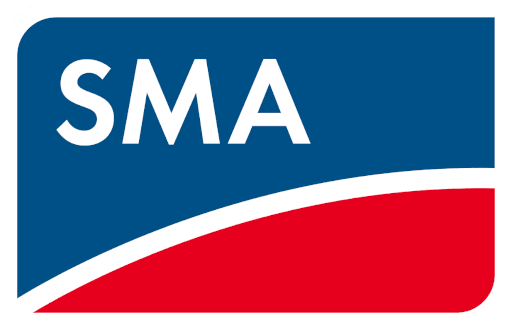 If you’ve been thinking about ways to save money on your home utility bills every month, the time may be right to work with a local company to convert your residence to solar power. By now, you’re probably aware that solar panels can save you money over standard electric bills, which have been increasing for the last 20 years at a national average of more than 5 percent per year. Studies show that in a 2,000 square-foot home, standard savings can be at least $25,000 over a 10 year period.
Not only can you realize a savings on your bills by going with solar, but you can possibly qualify for federal, state and/or local tax rebates and incentives that will save you even more money. Federal solar tax credits are still available through the end of 2016.
In addition to savings from government, some power companies offer rebates or credit for excess power sent back to them from consumers’ systems. You can check with your local utility company to see if this is the case for your area.
Solar power can lower your bills as well as create an ecologically-sustainable energy source for your home. That means less energy needs to be produced by local energy providers, which helps keep pollution out of the environment. That makes sense for your local region and the global community at large.
If you’ve been thinking about ways to save money on your home utility bills every month, the time may be right to work with a local company to convert your residence to solar power. By now, you’re probably aware that solar panels can save you money over standard electric bills, which have been increasing for the last 20 years at a national average of more than 5 percent per year. Studies show that in a 2,000 square-foot home, standard savings can be at least $25,000 over a 10 year period.
Not only can you realize a savings on your bills by going with solar, but you can possibly qualify for federal, state and/or local tax rebates and incentives that will save you even more money. Federal solar tax credits are still available through the end of 2016.
In addition to savings from government, some power companies offer rebates or credit for excess power sent back to them from consumers’ systems. You can check with your local utility company to see if this is the case for your area.
Solar power can lower your bills as well as create an ecologically-sustainable energy source for your home. That means less energy needs to be produced by local energy providers, which helps keep pollution out of the environment. That makes sense for your local region and the global community at large.
- Home
- Residential
- Commercial
- Tesla
- Testimonials
- About Us
- Contact Us
Month: February 2016
 If you’ve been thinking about ways to save money on your home utility bills every month, the time may be right to work with a local company to convert your residence to solar power. By now, you’re probably aware that solar panels can save you money over standard electric bills, which have been increasing for the last 20 years at a national average of more than 5 percent per year. Studies show that in a 2,000 square-foot home, standard savings can be at least $25,000 over a 10 year period.
Not only can you realize a savings on your bills by going with solar, but you can possibly qualify for federal, state and/or local tax rebates and incentives that will save you even more money. Federal solar tax credits are still available through the end of 2016.
In addition to savings from government, some power companies offer rebates or credit for excess power sent back to them from consumers’ systems. You can check with your local utility company to see if this is the case for your area.
Solar power can lower your bills as well as create an ecologically-sustainable energy source for your home. That means less energy needs to be produced by local energy providers, which helps keep pollution out of the environment. That makes sense for your local region and the global community at large.
If you’ve been thinking about ways to save money on your home utility bills every month, the time may be right to work with a local company to convert your residence to solar power. By now, you’re probably aware that solar panels can save you money over standard electric bills, which have been increasing for the last 20 years at a national average of more than 5 percent per year. Studies show that in a 2,000 square-foot home, standard savings can be at least $25,000 over a 10 year period.
Not only can you realize a savings on your bills by going with solar, but you can possibly qualify for federal, state and/or local tax rebates and incentives that will save you even more money. Federal solar tax credits are still available through the end of 2016.
In addition to savings from government, some power companies offer rebates or credit for excess power sent back to them from consumers’ systems. You can check with your local utility company to see if this is the case for your area.
Solar power can lower your bills as well as create an ecologically-sustainable energy source for your home. That means less energy needs to be produced by local energy providers, which helps keep pollution out of the environment. That makes sense for your local region and the global community at large.
First Solar Panels Likely To Surpass p-type Crystallin Panels in performance by 2017
Written by goldensolar on . Posted in Solar Panels, Solar Power. Leave a Comment
 Solar panels have continued to improve in capacity, effectiveness and size since their early inception. While capacity and effectiveness remain top priorities for researchers and manufacturers alike, the ability to improve these elements while reducing the size and weight of the panels themselves remains important. Not only does this enable lower production and shipping costs, but it also increases the number of places where solar panels can be utilized safely and efficiently. One company that is continuing to make strides forward in this area is First Solar.
First Solar is a sector leader in thin film solar technology. Their existing panels are believed to be already outperforming multi-crystalline solar panels; being able to produce around 8% more energy on an annual basis. The effect of this improvement can be felt consumers in both the commercial and private sectors, with lower costs for you, the end user, including in relation to solar panel installation. However, the caveat at the moment is that this improved performance is only seen at temperatures higher than 25 °C.
Despite this, it is still understood that by the end of 2017, First Solar’s Cadmium Telluride thin film panels will consistently produce more power and generally perform better than p-type crystalline solar panels of comparable size. Understanding the importance of this step forward begins with understanding the difference between the two type of solar panels:
Solar panels have continued to improve in capacity, effectiveness and size since their early inception. While capacity and effectiveness remain top priorities for researchers and manufacturers alike, the ability to improve these elements while reducing the size and weight of the panels themselves remains important. Not only does this enable lower production and shipping costs, but it also increases the number of places where solar panels can be utilized safely and efficiently. One company that is continuing to make strides forward in this area is First Solar.
First Solar is a sector leader in thin film solar technology. Their existing panels are believed to be already outperforming multi-crystalline solar panels; being able to produce around 8% more energy on an annual basis. The effect of this improvement can be felt consumers in both the commercial and private sectors, with lower costs for you, the end user, including in relation to solar panel installation. However, the caveat at the moment is that this improved performance is only seen at temperatures higher than 25 °C.
Despite this, it is still understood that by the end of 2017, First Solar’s Cadmium Telluride thin film panels will consistently produce more power and generally perform better than p-type crystalline solar panels of comparable size. Understanding the importance of this step forward begins with understanding the difference between the two type of solar panels:
- A p-type multi-crystalline solar panel is comprised of raw silicon that has been melted and poured into molds; it is cost efficient when compared to monocrystalline products and produces less waste silicon in the manufacturing process. However, the efficiency of this solar power system means that large areas need to be covered to gain real advantage from solar energy.
- Using Cadmium Telluride in solar panels is highly cost efficient, due in part to the lower cost of the raw materials. Older versions of these panels were less effective than their crystalline counterparts and, therefore, more of them were needed for the same energy creation, which negated the initial cost savings. However, if the Cadmium Telluride thin film panels produced by First Solar can overcome this, then the way is open for them to become market leaders.
Comparing Energy Output
One of the major difficulties in comparing the energy output of the two types of solar panels is that they are manufactured in different sizes, and, therefore, are of different wattages; during the comparison, care needs to be taken to ensure that size as well as wattage and energy creation is taken into consideration. For example, an increase of 280 to 290 Watts is required for the First Solar panel system to have a higher power output than p-type multi-crystalline panels. It is believed that this will be achieved by the end of 2017. At the moment, just 6 crystalline solar panel manufacturers currently hold around 50% of the world market, and achieving the goal by the end of 2017 would allow First Solar to compete with the current dominant producers, namely in China.









